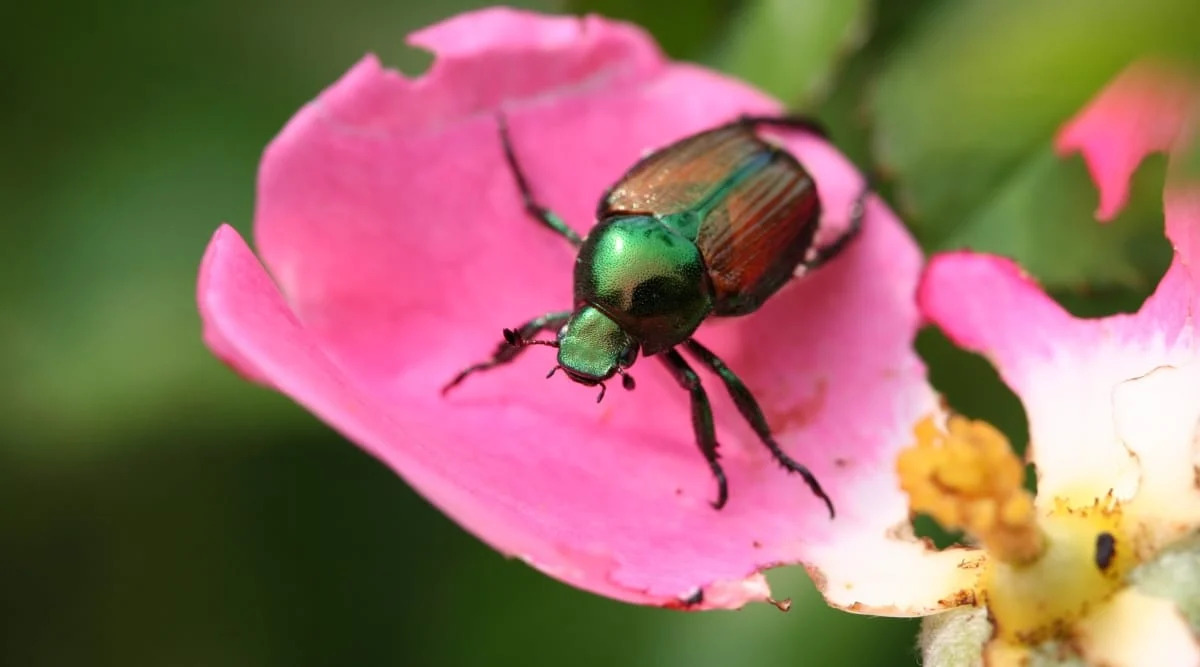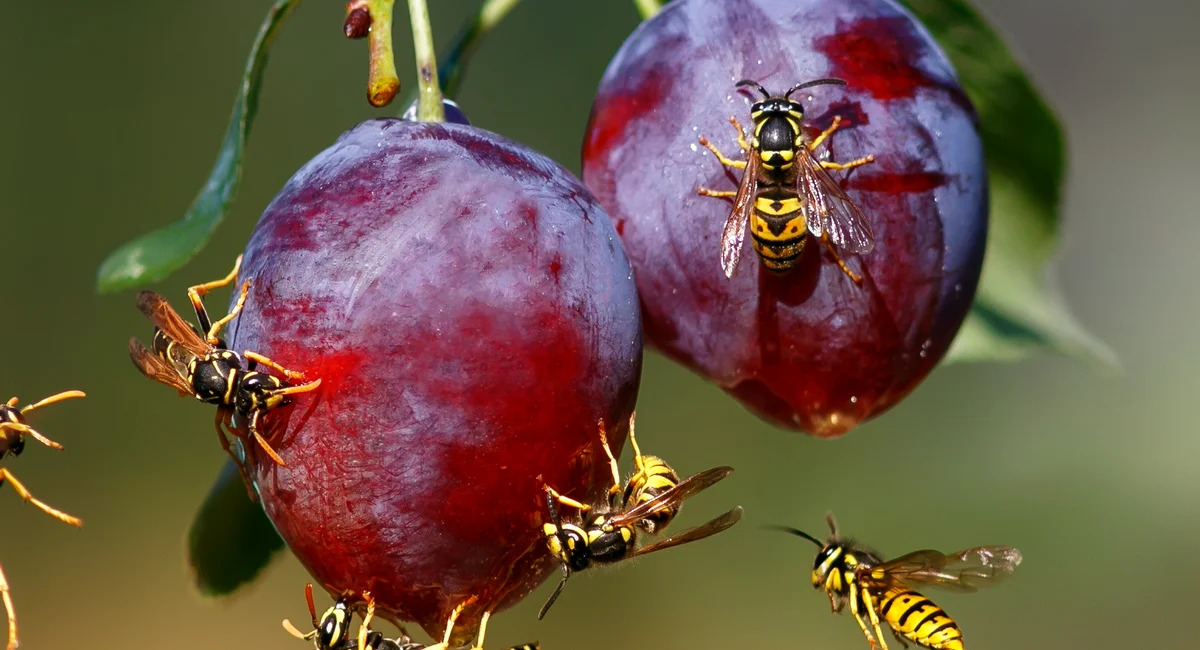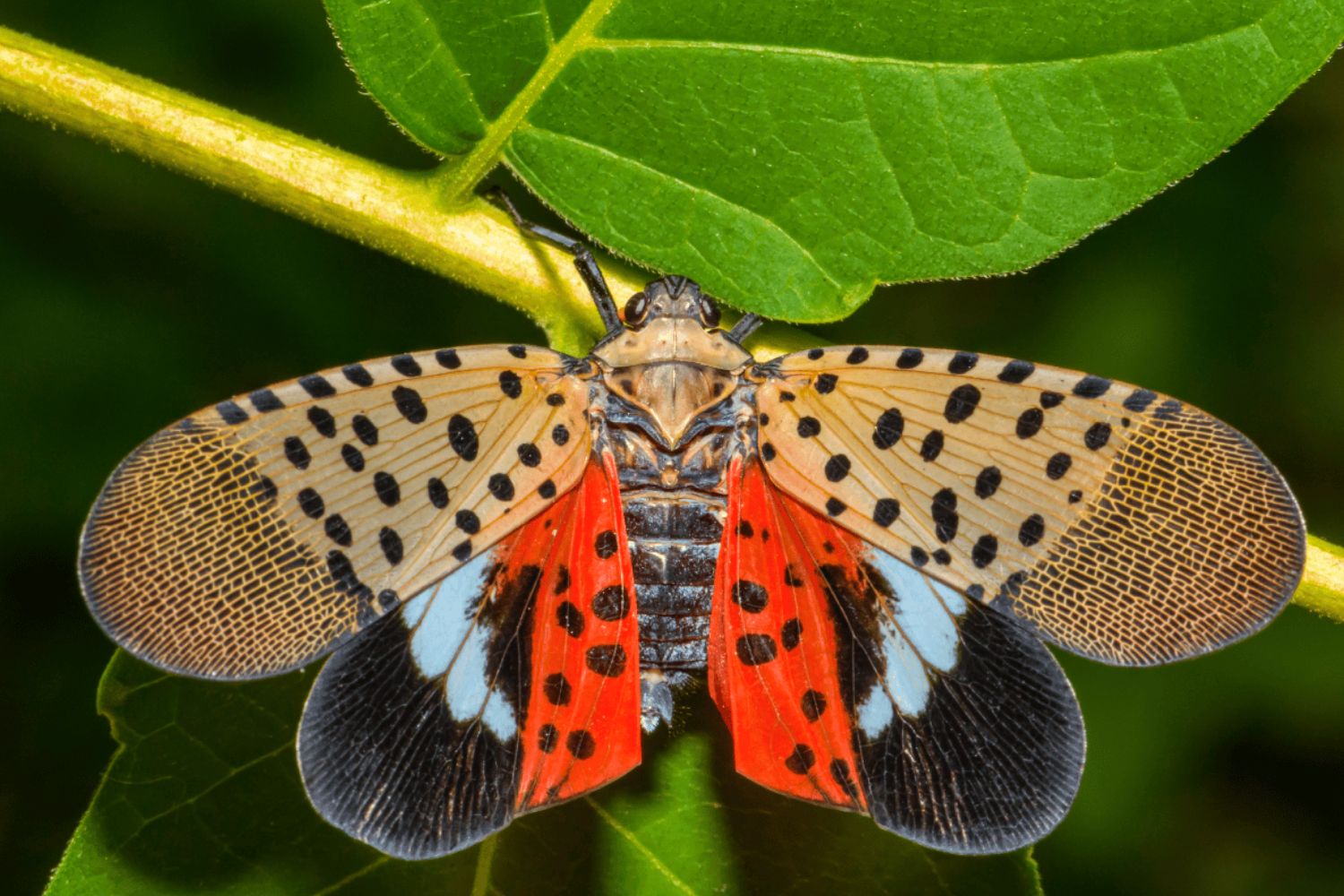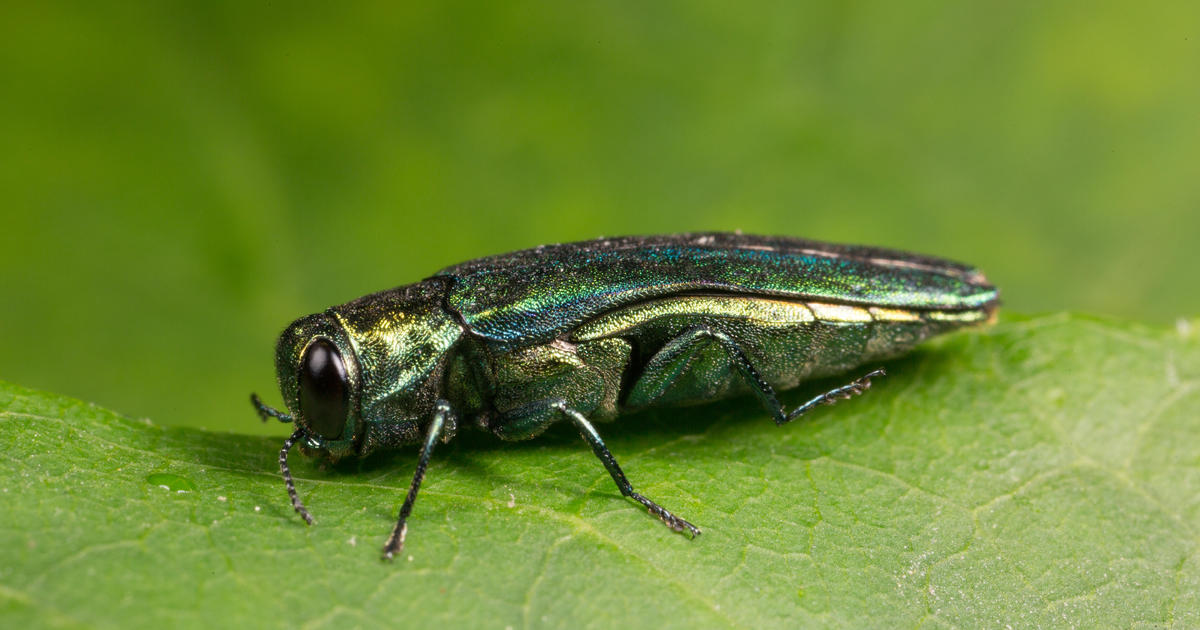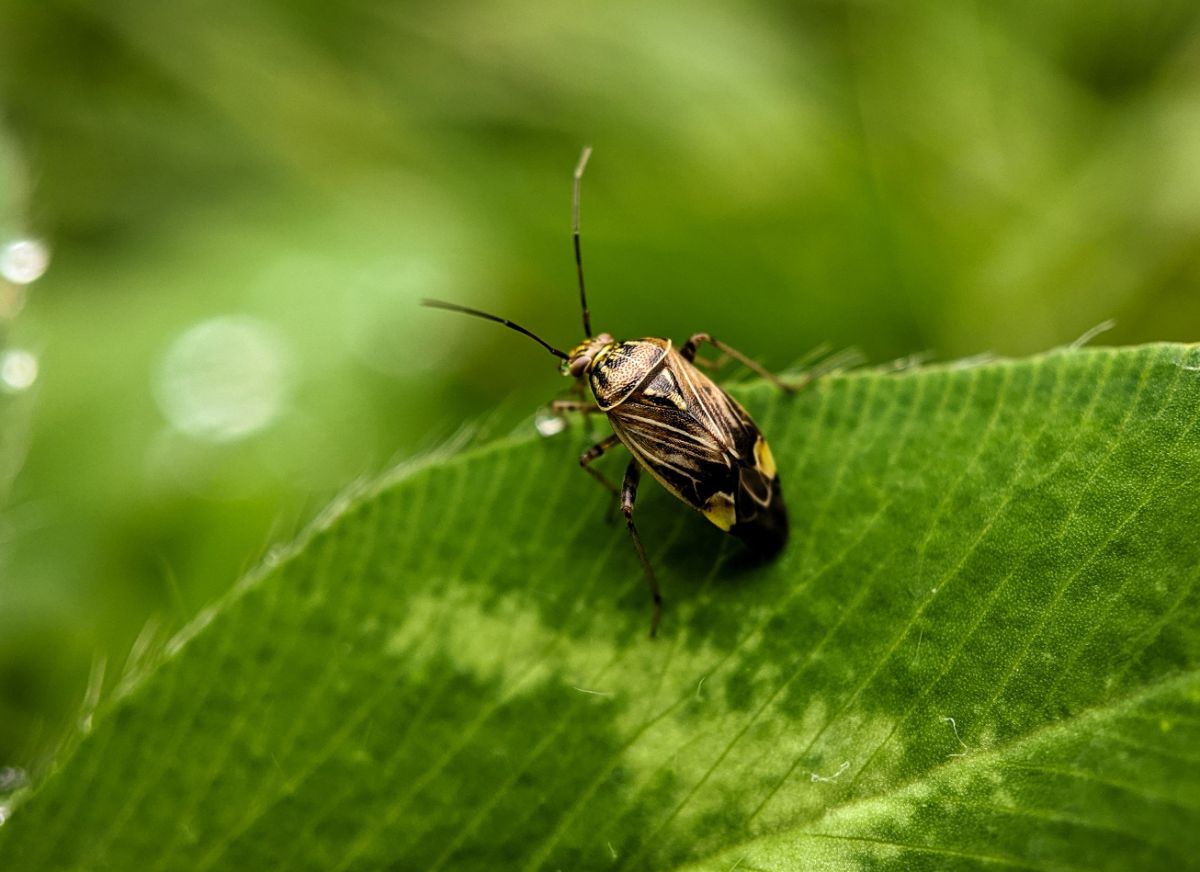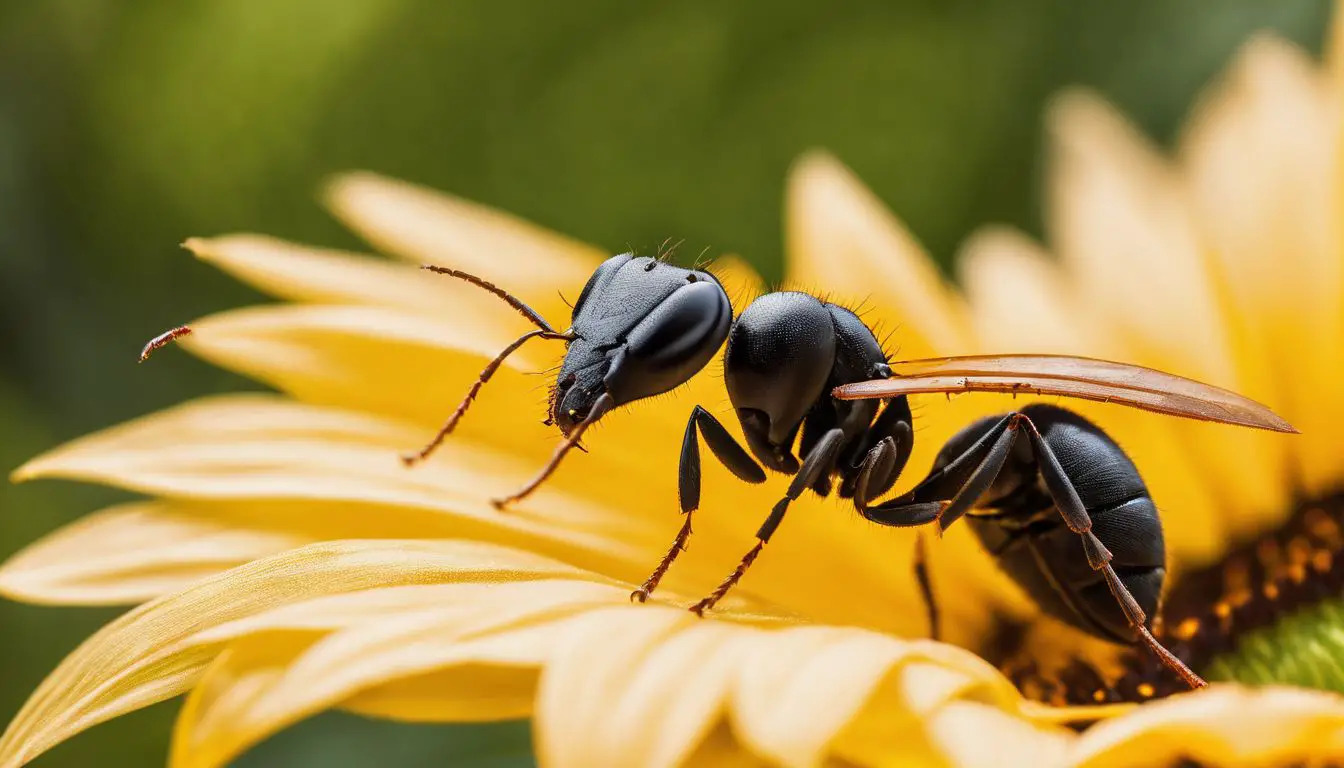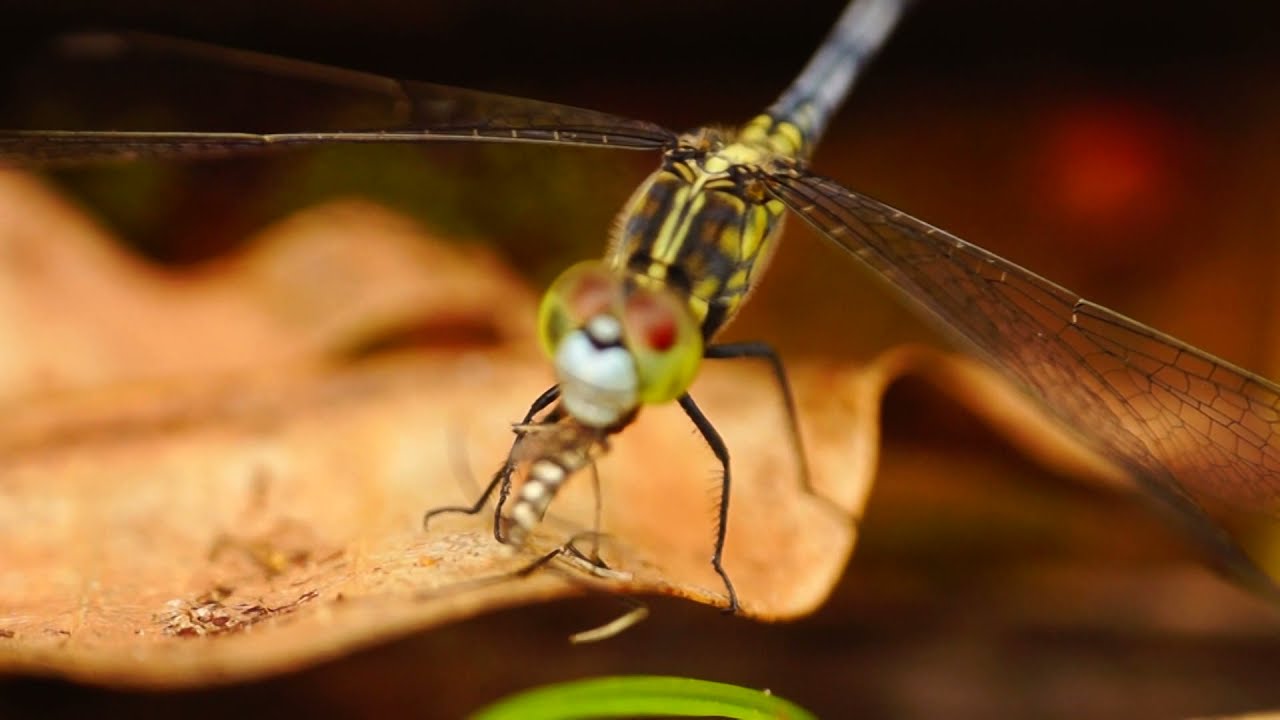Home>Gardening News and Trends>Latest News>What Insects Eat Oak Leaves
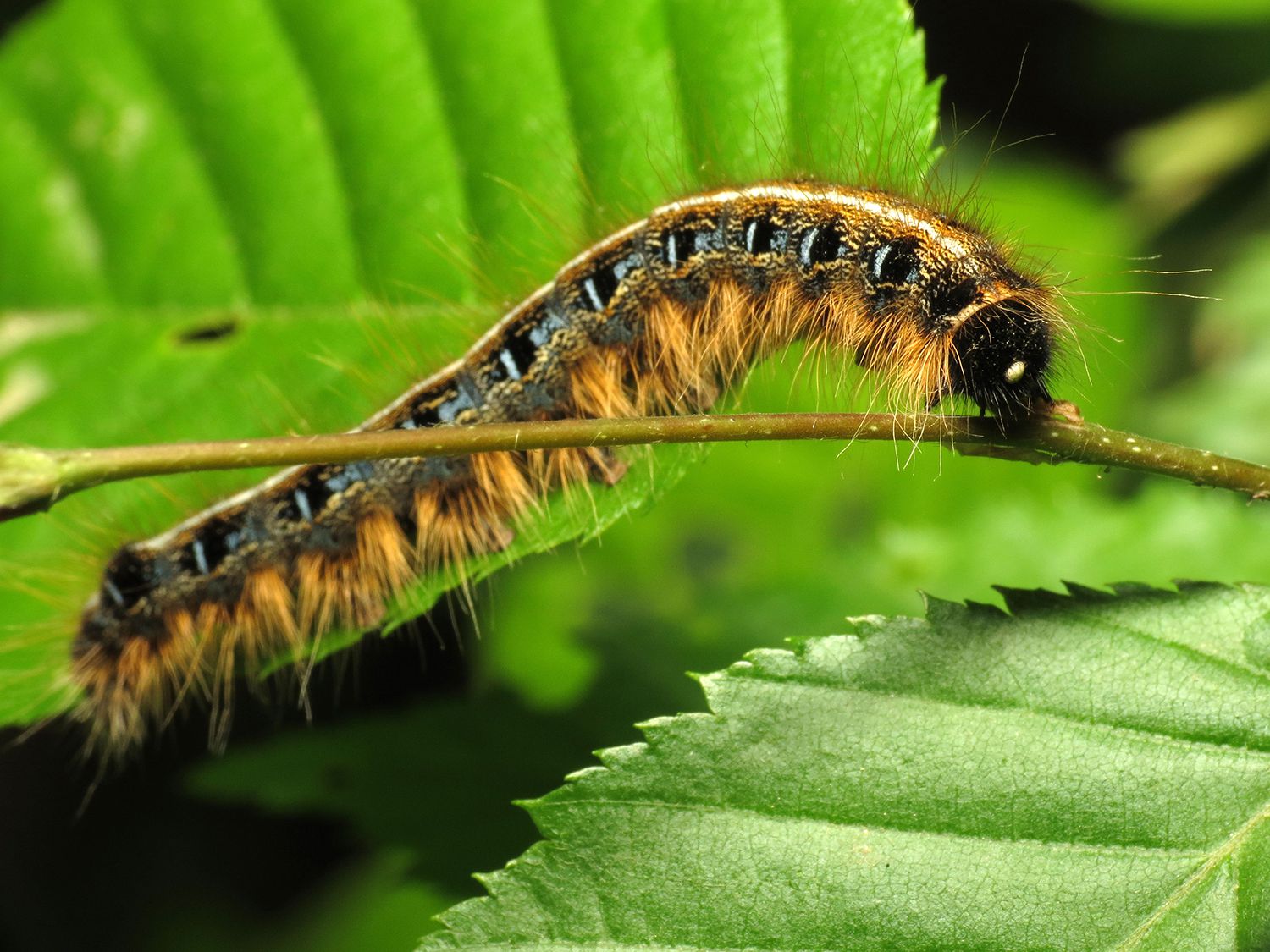

Latest News
What Insects Eat Oak Leaves
Modified: January 22, 2024
Discover the latest news on what insects eat oak leaves and how it impacts tree health. Stay informed with our comprehensive updates and insights.
(Many of the links in this article redirect to a specific reviewed product. Your purchase of these products through affiliate links helps to generate commission for Chicagolandgardening.com, at no extra cost. Learn more)
Table of Contents
Introduction
Oak trees are not only majestic and beautiful but also support a diverse ecosystem. They provide shade, shelter, and food for a wide range of organisms. One important aspect of oak trees that often goes unnoticed is the role they play in sustaining insect populations. Insects are a crucial part of our environment and have important ecological functions.
In this article, we will explore the fascinating world of insects that feed on oak leaves. We will delve into the importance of oak leaves as a food source, the types of insects that rely on them, the damage caused by these insects, and the natural predators that help maintain balance in the ecosystem. Additionally, we will discuss methods to control insect infestations while maintaining the health and vitality of oak trees.
Oak leaves serve as a vital food source for numerous insects, providing them with essential nutrients and energy. These insects play a significant role in the food chain, serving as a critical food source for other organisms such as birds and small mammals. The relationship between oak trees and insects is complex and fascinating, as both have adapted over time to coexist and depend on each other for survival.
Understanding the intricate dynamics between insects and oak trees allows us to appreciate the interconnectedness of the natural world and the importance of conserving this delicate balance. Through this article, we will gain insights into the remarkable adaptations, behaviors, and interactions of the insects that feed on oak leaves.
Join us on this captivating journey as we delve into the enthralling world of insects that rely on oak leaves as their primary food source. Through our exploration, we will gain a deeper appreciation for the intricate relationships and delicate balance that exist within our natural environment.
Importance of Oak Leaves
Oak leaves play a vital role in the ecosystem, providing numerous benefits to both the environment and the organisms within it. These leaves are not just a source of shade and beauty but also serve as a key component of the food web. Let’s delve into the importance of oak leaves in more detail.
Firstly, oak leaves serve as a nutritional powerhouse for various organisms. They are rich in essential nutrients, such as carbohydrates, proteins, and minerals, which are necessary for the growth and development of many insects. Oak leaves provide a reliable and abundant food source that sustains populations of insects throughout their life cycles.
In addition to being a source of nutrition, oak leaves also support a diverse and complex web of interactions within the ecosystem. As insects feed on oak leaves, they become food for other organisms such as birds, bats, and small mammals. This creates a chain of energy transfer, contributing to the overall biodiversity and functioning of the ecosystem.
Furthermore, oak leaves provide shelter and habitat for many insects. The dense foliage and sturdy branches of oak trees offer protection from predators and harsh environmental conditions. Insects often lay their eggs on the leaves or in the crevices of the tree bark, ensuring the survival and reproduction of their species.
Oak leaves also contribute to the nutrient cycle of the ecosystem. As they decompose, they release organic matter, enriching the soil and providing essential nutrients for other plants and organisms. This process enhances the health and fertility of the surrounding environment.
Moreover, oak leaves play a vital role in climate regulation. They act as natural air purifiers, filtering out pollutants and particulate matter from the atmosphere. Additionally, through the process of transpiration, oak leaves release water vapor into the air, which helps to cool the surrounding environment, especially in urban areas.
In summary, oak leaves are of utmost importance to the ecosystem. They provide nutrition, habitat, and shelter for a myriad of insects. Their role in the food web sustains populations of organisms and promotes biodiversity. Furthermore, oak leaves contribute to the nutrient cycle and climate regulation, making them essential for ecological balance.
Types of Insects
When it comes to insects that feed on oak leaves, there is a remarkable diversity in terms of species and adaptations. These insects have developed unique traits and behaviors that allow them to exploit oak leaves as a food source. Let’s explore some of the common types of insects found in oak ecosystems.
1. Caterpillars: Caterpillars are perhaps the most well-known insects that feed on oak leaves. Species such as the gypsy moth caterpillar and the oak leafroller caterpillar are notorious for their voracious appetites. These larvae have specialized mouthparts that enable them to chew and consume large quantities of oak foliage.
2. Beetles: Beetles also play a significant role in the consumption of oak leaves. The oak leaf beetle, for instance, feeds on the edges of leaves, creating distinctive notches. Other beetles, such as the acorn weevil, are known to feed on oak acorns rather than leaves but still impact the overall health of the oak tree.
3. Sawflies: Sawflies are close relatives of wasps, but they lack the characteristic “waist” of wasps. These insects have chewing mouthparts and are capable of causing substantial damage to oak leaves. The caterpillar-like larvae of sawflies are often found feeding on oak foliage in large groups.
4. Aphids: Although small in size, aphids can reproduce rapidly and inflict damage to oak leaves. These sap-sucking insects extract nutrients from the leaves, causing them to curl and distort. In addition to consuming oak leaves, aphids also excrete a sticky substance called honeydew, which can attract other insects and promote the growth of sooty mold on the leaves.
5. Leafhoppers: Leafhoppers are agile insects known for their ability to jump from leaf to leaf. They use their specialized mouthparts to extract sap from oak leaves, causing discoloration and stunted growth. Some leafhoppers also have the ability to inject toxins into the leaves, further compromising the health of the oak tree.
These are just a few examples of the diverse array of insects that rely on oak leaves as a food source. Each species has evolved its own set of adaptations to exploit the nutritional content of oak foliage. Understanding the different types of insects and their interactions with oak trees is crucial for preserving the health and balance of these ecosystems.
Insects That Feed on Oak Leaves
Oak trees provide a substantial food source for a wide variety of insects. These insects have evolved specialized adaptations to feed on the leaves, extracting nutrients and energy necessary for their growth and survival. Let’s explore some of the notable insects that rely on oak leaves as their primary food source.
1. Gypsy Moth: The gypsy moth (Lymantria dispar) is a well-known insect that can cause significant defoliation of oak trees. The caterpillars of the gypsy moth feed voraciously on the leaves, often leading to the outright destruction of foliage. Infestations of gypsy moth caterpillars can have severe consequences for oak populations.
2. Oak Leafroller: The oak leafroller (Archips semiferanus) is another insect that feeds on oak leaves. The caterpillars of the oak leafroller construct silk nests on the undersides of oak leaves, securely curling the leaves around themselves as they feed. This behavior provides them with protection from predators and environmental conditions.
3. Oak Leafminers: Oak leafminers (Cameraria spp.) are tiny moths whose larvae create distinctive tunnels or “mines” within oak leaves. These tunnels disrupt the normal photosynthetic activity of the leaf, causing discoloration and reduced growth. While the damage caused by individual leafminers may be minor, infestations can lead to significant defoliation.
4. Oak Leaf Beetles: Oak leaf beetles (Xanthogaleruca luteola) are relatively small insects that feed on the edges of oak leaves. They create characteristic notches along the leaf margins, deforming the shape of the foliage. Heavy infestations of oak leaf beetles can weaken trees and make them more susceptible to diseases and other stressors.
5. Oak Sawflies: Oak sawflies (Caliroa spp.) are notable for their distinctive caterpillar-like larvae, which feed on oak leaves in large groups. These larvae skeletonize the leaves, consuming the soft tissue between the veins and leaving behind a lacy pattern. Despite their caterpillar-like appearance, oak sawflies are not true caterpillars but belong to the sawfly family.
These are just a few examples of the insects that target oak leaves as their primary food source. It is important to note that while these insects can cause damage to oak trees, they also play a crucial role in the ecosystem. They provide food for other organisms, contribute to nutrient cycling, and maintain a natural balance within oak ecosystems.
Understanding the diverse range of insects that feed on oak leaves allows us to appreciate the intricate relationships and dynamics at play in these ecosystems. By studying these insects, researchers can develop more effective strategies for managing infestations and preserving the health of oak trees for future generations.
Damage Caused by Insects
Insects that feed on oak leaves can cause significant damage to the overall health and appearance of oak trees. These insects have various feeding behaviors and mechanisms that can weaken and potentially kill oak trees if left unchecked. Let’s explore the types of damage caused by these insects in more detail.
1. Defoliation: One of the most noticeable forms of damage caused by leaf-feeding insects is defoliation. Caterpillars, such as gypsy moth and oak leafroller, can strip oak trees of their leaves, leaving them vulnerable and unable to carry out vital photosynthesis. Without sufficient leaf cover, the tree’s growth, vigor, and ability to withstand other stresses are significantly compromised.
2. Leaf Discoloration and Deformation: Some insects, like oak leafminers and leafhoppers, feed on the tissues inside the leaves, causing discoloration and deformation. Damaged leaves may turn brown or yellow, exhibit premature leaf drop, or develop abnormal growth patterns. This affects the tree’s aesthetic appeal and can indicate an underlying infestation.
3. Weakening of Tree Structure: Continuous feeding by insects can weaken the structure and overall health of oak trees. Oak leaf beetles, for example, create notches along the leaf margins, reducing the leaf size and interfering with photosynthesis. This diminished energy production can weaken the tree over time, making it more susceptible to disease, drought, and other stressors.
4. Increased Susceptibility to Disease and Pests: Infestations of leaf-feeding insects can make oak trees more vulnerable to other diseases and pests. Weakened trees are more susceptible to fungal infections and can become attractive to wood-boring insects, which further compromise their structural integrity. This cascading effect can have severe consequences for the long-term health and survival of oak trees.
5. Disruption of Ecosystem Balance: Insects that feed on oak leaves play important roles in the ecosystem, but when their populations become unbalanced, it can disrupt the natural equilibrium. Excessive defoliation or damage to oak trees can affect the food web, impacting the availability of resources for other organisms that rely on oak foliage for sustenance.
To protect oak trees from the damage caused by leaf-feeding insects, it is essential to monitor and manage infestations effectively. This may involve employing integrated pest management strategies, such as biological controls, selective chemical treatments, and cultural practices, to minimize the impact on the tree and ecosystem while preserving the health and vitality of these magnificent trees.
By understanding the types of damage caused by insects that feed on oak leaves, we can appreciate the importance of early detection and timely intervention to maintain the overall well-being of oak trees and the ecosystems they support.
Natural Predators of Insects
In the complex web of interactions within oak ecosystems, natural predators play a crucial role in regulating populations of insects that feed on oak leaves. These predators help to maintain a balance in the ecosystem by keeping insect populations in check. Let’s explore some of the natural predators of leaf-feeding insects in oak trees.
1. Birds: Many bird species feed on insects, including those that consume oak leaves. Birds such as warblers, chickadees, and nuthatches are known to hunt for caterpillars, beetles, and other insects in oak canopies. Their insectivorous feeding habits help to control pest populations and prevent excessive damage to oak trees.
2. Small Mammals: Squirrels, mice, and other small mammals play a role in controlling insect populations as well. These animals may actively seek out insects or consume insects inadvertently while foraging for other food sources. Their presence in oak ecosystems helps to maintain a natural balance and reduce the impact of leaf-feeding insects.
3. Beneficial Insects: Some insects themselves act as natural predators of leaf-feeding insects. Ladybugs, lacewings, and parasitic wasps are examples of beneficial insects that prey on caterpillars and other pests. These natural enemies help to control population numbers and limit the damage caused by leaf-feeding insects in oak trees.
4. Spiders: Spiders are another important group of predators that feed on a range of insects, including those that consume oak leaves. They trap and capture insects in their webs or use their agile hunting abilities to actively pursue prey. Spiders contribute to the natural control of pest populations and assist in maintaining the health of oak trees.
5. Amphibians and Reptiles: Some amphibians and reptiles, such as frogs, toads, lizards, and snakes, feed on insects and contribute to the control of leaf-feeding insects in oak ecosystems. These predators target insects that may be hiding in leaf litter or climbing on tree trunks, playing an important role in regulating insect populations.
These natural predators, along with other organisms in oak ecosystems, help to prevent outbreaks of leaf-feeding insects and maintain a balance between predator and prey. Their presence and feeding habits are integral to the overall health and sustainability of oak trees and the intricate web of life that depends on them.
By recognizing the vital role of natural predators in managing insect populations, we can appreciate the intricate relationships and interconnectedness of various organisms in oak ecosystems. Conserving and protecting these natural predators and their habitats is crucial for maintaining the health and resilience of oak tree communities.
Methods to Control Insect Infestations
When faced with insect infestations that threaten the health of oak trees, it is important to implement effective control measures to minimize damage and preserve the overall vitality of the ecosystem. Here are some methods commonly used to control insect infestations in oak trees.
1. Biological Control: Biological control involves using natural enemies to reduce pest populations. This method often involves introducing or encouraging the presence of beneficial insects, such as parasitic wasps or predators like ladybugs, to prey on leaf-feeding insects. By allowing these natural predators to manage pest populations, the use of chemicals and pesticides can be minimized.
2. Cultural Practices: Cultural practices involve modifying the environment or management practices to help control insect infestations. For example, maintaining proper tree health through regular pruning, irrigation, and fertilization can improve the tree’s ability to resist and recover from insect attacks. Removing and destroying fallen leaves, which may harbor overwintering insects, can also help reduce infestation levels.
3. Chemical Control: In severe cases, chemical control may be necessary to manage insect infestations. Insecticides specifically targeting the pests, formulated and applied following recommended guidelines, can help reduce population levels. However, it is crucial to use these chemicals judiciously and with caution to minimize harm to non-target insects, beneficial organisms, and the overall environment.
4. Integrated Pest Management (IPM): IPM is an approach that combines multiple control methods to manage pest populations effectively while minimizing the use of chemicals. IPM strategies involve regular monitoring to detect early signs of an infestation, utilizing cultural practices to create an unfavorable environment for pests, and implementing control measures only when necessary. This holistic approach aims to balance pest control with the preservation of beneficial organisms and environmental sustainability.
5. Tree Banding: Tree banding involves placing adhesive bands or sticky traps around the trunk of oak trees to catch crawling insects, such as caterpillars, as they attempt to ascend the trunk. This method is particularly effective against certain types of pests but may not be as effective against pests that primarily feed on foliage.
It is important to note that the choice of control measures should take into consideration the specific insect pests, the severity of infestation, and the potential impacts on the overall ecosystem. Consulting with professionals, such as arborists or entomologists, can provide valuable guidance in determining the most appropriate and sustainable control methods for specific situations.
By deploying appropriate control methods and implementing preventive measures, we can effectively manage insect infestations and ensure the long-term health and sustainability of oak trees and the ecosystems they support.
Conclusion
Oak trees are not only magnificent and beautiful but also provide essential resources for a diverse range of organisms, including insects. Insects that feed on oak leaves have adapted unique strategies and behaviors to exploit the nutritional benefits of this abundant food source. While these insects can cause damage to oak trees, they also play important ecological roles and are part of a delicate balance in the ecosystem.
Understanding the importance of oak leaves as a food source and the impact of leaf-feeding insects is crucial for conserving oak ecosystems. By recognizing the diversity of insects that rely on oak leaves, we gain insight into the complex web of interactions that exists within these ecosystems. We also learn to appreciate the role of natural predators in regulating insect populations and maintaining a balance in the ecosystem.
To mitigate the damage caused by leaf-feeding insects, it is important to employ effective methods of control. These can range from biological control and cultural practices to chemical control, all while ensuring that the health and overall biodiversity of the ecosystem are preserved. Integrated Pest Management (IPM) strategies offer a holistic approach that balances control measures with the conservation of beneficial organisms and sustainable environmental practices.
Ultimately, the preservation of oak trees and the ecosystems they support requires a collaborative effort. Arborists, entomologists, and the general public can work together to monitor and manage insect infestations, protect natural predators, and promote the health of oak trees through responsible practices.
By understanding and appreciating the complex relationship between insects and oak leaves, we can ensure the preservation of these iconic trees and the vital role they play in our environment. With proper management and conservation efforts, oak trees will continue to provide shade, shelter, and sustenance for countless organisms and future generations to come.


